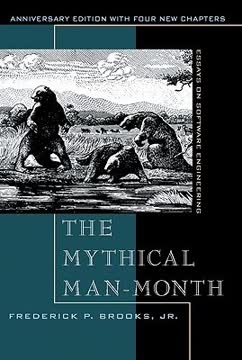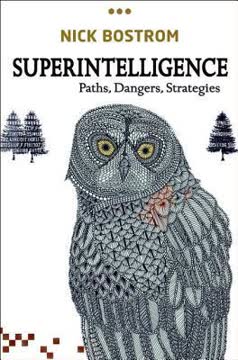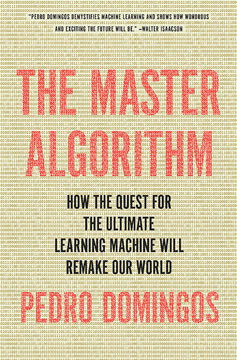가지 주요 요점
제2의 기계 시대가 우리의 경제와 사회를 변화시키고 있다
"우리 세대는 역사상 가장 놀라운 두 가지 사건을 경험할 행운을 가질 것입니다: 진정한 기계 지능의 창조와 모든 인간을 공통의 디지털 네트워크로 연결하여 지구의 경제를 변화시키는 것입니다."
심오한 변화가 진행 중이다. 우리는 산업 혁명만큼 중요한 제2의 기계 시대에 진입하고 있습니다. 첫 번째 기계 시대가 증기력과 전기를 통해 물리적 한계를 극복하는 것이었다면, 이 새로운 시대는 디지털 기술이 우리의 정신적 한계를 극복하는 것으로 특징지어집니다.
가속화되는 변화. 기술 발전의 속도는 급격히 가속화되고 있습니다:
- 자율 주행 자동차는 몇 년 만에 불가능에서 현실로 변했습니다
- 컴퓨터는 이제 인간의 말을 이해하고 응답할 수 있습니다
- 로봇은 점점 더 능력 있고 인간과 유사해지고 있습니다
- IBM의 왓슨과 같은 인공지능 시스템은 복잡한 작업에서 인간을 능가할 수 있습니다
이 기술 혁명은 우리가 일하고 소통하는 방식에서부터 배우고 창조하는 방식에 이르기까지 경제와 사회의 모든 측면을 재편하고 있습니다. 그 영향은 심오하고 광범위합니다.
디지털 기술은 기하급수적이고 디지털적이며 조합적이다
"우리의 디지털 세계의 밀도와 복잡성은 위험을 동반합니다."
기하급수적 성장. 무어의 법칙 - 약 2년마다 컴퓨팅 파워가 두 배로 증가하는 법칙 - 은 여전히 유효합니다. 디지털 기술의 이러한 기하급수적 개선은 거의 마법처럼 보일 수 있는 능력을 가져옵니다.
모든 것의 디지털화. 우리의 세계가 점점 더 디지털화되고 연결됨에 따라 데이터와 디지털 콘텐츠의 폭발적인 증가를 목격하고 있습니다:
- 매일 3000억 개 이상의 이메일이 발송됩니다
- 하루에 5억 개의 트윗이 작성됩니다
- 하루에 40억 개의 유튜브 동영상 조회수가 발생합니다
조합적 혁신. 디지털 기술은 새로운 방식으로 혼합되고 결합될 수 있어 빠른 혁신을 이끌어냅니다. 주요 예시:
- 스마트폰은 컴퓨팅, GPS, 카메라, 센서 등을 결합합니다
- 우버와 에어비앤비와 같은 공유 경제 플랫폼은 디지털 네트워크를 활용합니다
- 3D 프린팅은 디지털 디자인과 새로운 제조 기술을 결합합니다
이 조합적 특성은 혁신의 속도를 가속화하고 예상치 못한 돌파구를 만들어냅니다.
인공지능과 글로벌 연결성은 게임 체인저이다
"승자 독식 시장이 더 중요해지면, 상위 소득이 중간 소득에서 멀어지기 때문에 소득 불평등이 증가할 것입니다."
AI 혁명. 인공지능은 빠르게 발전하고 있으며, 기계는 이제 복잡한 인지 작업을 수행할 수 있습니다:
- 이미지 및 음성 인식
- 자연어 처리
- 복잡한 문제 해결 및 의사 결정
이는 자동화와 미래의 일에 대한 심오한 영향을 미칩니다.
글로벌 디지털 네트워크. 인터넷과 모바일 기술은 전 세계 수십억 명의 사람들을 연결했습니다:
- 전 세계적으로 40억 명 이상의 인터넷 사용자
- 50억 명의 모바일 폰 사용자
- 즉각적인 글로벌 소통 및 정보 공유
새로운 기회. AI와 연결성의 결합은 엄청난 기회를 창출합니다:
- 글로벌 협업 및 혁신
- 수십억 명을 위한 지식 및 교육 접근성
- 새로운 비즈니스 모델 및 경제 패러다임
하지만 이는 일자리 대체와 디지털 경제에서의 승자 독식 역학과 같은 도전 과제도 가져옵니다.
기술은 경제에서 풍요와 확산을 동시에 창출한다
"GDP와 생산성 성장은 중요하지만, 그것들은 목적이 아니라 수단입니다."
증가하는 풍요. 디지털 기술은 엄청난 경제적 가치를 창출하고 우리의 삶의 질을 향상시키고 있습니다:
- 더 저렴하고 더 높은 품질의 상품 및 서비스
- 이전에는 상상할 수 없었던 새로운 제품 및 경험
- 산업 전반에 걸친 생산성 향상
증가하는 확산. 그러나 혜택은 고르게 분배되지 않습니다:
- 증가하는 소득 불평등
- 고숙련 및 저숙련 일자리의 성장, 중간 숙련 일자리의 감소
- 많은 디지털 시장에서의 승자 독식 역학
이 풍요와 확산 사이의 긴장은 제2의 기계 시대의 특징입니다. 전체 경제 파이는 커지고 있지만, 증가하는 몫은 소수의 인구에게 돌아가고 있으며, 많은 사람들이 뒤처지고 있습니다.
아이디어 창출 및 대규모 패턴 인식과 같은 기술은 여전히 가치가 있다
"우리는 진정으로 창의적이거나, 기업가적이거나, 혁신적인 기계를 본 적이 없습니다."
인간의 장점. 빠른 AI 발전에도 불구하고, 인간은 여전히 중요한 장점을 가지고 있습니다:
- 창의성과 아이디어 창출
- 복잡한 소통 및 감성 지능
- 새로운 상황에서의 적응력 및 문제 해결 능력
보완적 기술. 가장 성공적인 노동자는 고유한 인간의 기술을 기술적 능력과 결합할 것입니다:
- 인간의 판단으로 보강된 데이터 기반 의사 결정
- 고급 디지털 도구와 결합된 디자인 사고
- 기술이 지원하는 조직에서의 리더십 및 팀워크
교육의 중요성. 이러한 보완적인 인간+기계 기술을 개발하는 것이 중요합니다:
- 교육에서 창의성, 비판적 사고 및 적응력에 중점을 둡니다
- 기술 변화에 발맞추기 위한 평생 학습
- 기술적 지식을 넓은 학제 간 사고와 결합
교육과 기업가 정신은 적응의 열쇠이다
"기업가 정신은 적어도 20세기 중반에 경제학자 조셉 슘페터의 자본주의와 혁신의 본질에 대한 획기적인 연구 이후로 경제학 101 교과서의 중요한 부분이었습니다."
교육 재고. 우리의 교육 시스템은 제2의 기계 시대에 사람들을 준비시키기 위해 진화해야 합니다:
- 창의성, 문제 해결 및 적응력에 중점을 둡니다
- 커리큘럼 전반에 걸쳐 기술 통합
- 평생 학습 및 재교육에 중점을 둡니다
기업가 정신 육성. 새로운 비즈니스는 일자리 창출과 혁신에 중요합니다:
- 비즈니스 시작 장벽을 줄입니다
- 기업가를 위한 자본 및 자원 접근성 개선
- 스타트업 및 혁신을 위한 지원 생태계 조성
정책 우선순위:
- 연구 및 개발에 투자
- 창의성을 강조하면서 STEM 교육 개선
- 노동자 재교육 및 전환 지원
디지털 시대를 위한 경제 지표와 정책을 재고해야 한다
"이 서비스들은 가격이 없기 때문에 공식 통계에서 거의 보이지 않습니다. 그들은 경제에 가치를 더하지만, GDP에는 달러를 추가하지 않습니다."
GDP를 넘어서. GDP와 같은 전통적인 경제 지표는 디지털 경제에서 창출되는 많은 가치를 포착하지 못합니다:
- 무료 디지털 서비스 (예: 구글, 위키피디아)
- 삶의 질 및 편의성 향상
- 환경 및 사회적 영향
새로운 지표 필요. 우리는 경제 발전과 복지를 측정하는 새로운 방법이 필요합니다:
- 디지털 경제 지표
- 삶의 질 및 행복 지표
- 지속 가능성 및 불평등 지표
정책적 함의. 일과 가치 창출의 본질이 변화함에 따라, 정책도 적응해야 합니다:
- 사회 안전망 및 소득 지원 재고
- 디지털 및 무형 자산을 고려한 세금 정책
- 디지털 시대를 위한 지적 재산권 법
기술 발전은 위험을 가져오지만 엄청난 잠재적 이익도 가져온다
"우리는 전례 없는 풍요와 자유를 누릴 수 있거나, 인류가 이제까지 본 적 없는 더 큰 재앙을 겪을 수 있습니다."
잠재적 위험:
- 일자리 대체 및 경제적 혼란
- 증가하는 불평등 및 사회적 긴장
- 프라이버시 및 보안 문제
- 고급 AI로 인한 존재적 위험
엄청난 기회:
- 의료 및 수명 연장의 극적인 개선
- 기후 변화와 같은 글로벌 문제 해결
- 지식 및 교육에 대한 전례 없는 접근성
- 인간 창의성과 탐험의 새로운 경계
우리의 미래 형성. 제2의 기계 시대의 결과는 미리 정해져 있지 않습니다. 정책, 교육 및 혁신에서 현명한 선택을 통해, 우리는 이러한 기술의 엄청난 잠재력을 활용하여 인류에게 더 번영하고 공평하며 충만한 미래를 창출할 수 있습니다.
마지막 업데이트 날짜:
FAQ
What's The Second Machine Age about?
- Focus on Technology's Impact: The book explores how digital technologies, especially AI and computers, are reshaping economies and societies. It marks the transition from the first machine age, driven by physical power, to the second, characterized by mental power and digital innovation.
- Bounty and Spread: Introduces "bounty," the abundance from technological advancements, and "spread," the growing inequality in wealth and income distribution due to these changes.
- Future Implications: Discusses the effects on individuals, businesses, and policymakers, emphasizing the need for new strategies to handle rapid technological progress.
Why should I read The Second Machine Age?
- Understanding Modern Changes: Offers insights into how technology is transforming work, productivity, and economic structures, affecting everyday life and future job markets.
- Informed Decision-Making: Provides recommendations for adapting to the evolving landscape of work and technology, empowering informed career or business decisions.
- Engaging Examples: Uses engaging examples and anecdotes to make complex ideas accessible and relatable.
What are the key takeaways of The Second Machine Age?
- Exponential Growth of Technology: Highlights that technological progress is exponential, leading to rapid societal changes, exemplified by Moore's Law.
- Digital Goods and Non-Rivalry: Explains that digital goods are non-rival with near-zero marginal costs, challenging traditional economic models.
- Inequality and Job Displacement: Discusses how technological advancements can increase inequality, concentrating benefits among a few and challenging workers in routine jobs.
What are the best quotes from The Second Machine Age and what do they mean?
- “Technology is a gift of God.”: Highlights technology's transformative power in shaping civilizations and improving life, underscoring its potential to drive progress.
- “Any sufficiently advanced technology is indistinguishable from magic.”: Reflects the awe new technologies inspire, suggesting advanced tech may seem miraculous to those unfamiliar with it.
- “The greatest shortcoming of the human race is our inability to understand the exponential function.”: Emphasizes the struggle to grasp exponential growth, crucial for understanding rapid technological changes.
How does The Second Machine Age define "bounty" and "spread"?
- Bounty Explained: Refers to the abundance of goods, services, and opportunities from technological advancements, signifying positive economic effects like increased productivity.
- Spread Defined: Highlights growing inequality in wealth and income distribution accompanying technological progress, pointing to disparities in who benefits from innovations.
- Interconnected Concepts: Argues that while bounty can lead to economic growth, it can also exacerbate social inequalities, necessitating policy interventions for equitable distribution.
What is Moore's Law as discussed in The Second Machine Age?
- Definition of Moore's Law: Observes that the number of transistors on a microchip doubles approximately every two years, leading to exponential computing power growth.
- Implications for Technology: Drives economic growth and productivity by enabling increasingly powerful and efficient technologies, a key driver of the second machine age.
- Historical Context: Has held true for over four decades, influencing various sectors and industries, central to the computer age.
How does The Second Machine Age address the challenges of inequality?
- Recognition of Inequality: Acknowledges that technological advancements can lead to increased inequality, concentrating benefits among a small group.
- Policy Interventions: Discusses the need for interventions like improved access to education and training for vulnerable workers to ensure broader benefits from technological progress.
- Long-Term Solutions: Advocates for solutions promoting inclusive growth, essential for sustaining economic progress and social stability amid rapid technological change.
What role does artificial intelligence play in The Second Machine Age?
- AI as a Transformative Force: Key driver of the second machine age, enabling machines to perform cognitive tasks once thought exclusively human.
- Applications of AI: Examples like IBM's Watson in healthcare and OrCam for the visually impaired show AI enhancing human capabilities and quality of life.
- Future Prospects: As AI advances, it will increasingly shape the economy and society, raising ethical concerns and potential job displacement issues.
How does The Second Machine Age suggest we measure economic progress?
- Limitations of GDP: Argues traditional measures like GDP fail to capture the full value of digital goods and services, leading to misleading economic well-being conclusions.
- Consumer Surplus as a Metric: Proposes using consumer surplus to measure economic progress, reflecting the value individuals derive from goods and services relative to cost.
- Need for New Metrics: Calls for developing metrics accounting for intangible assets and digital technologies' impact on well-being for a clearer economic progress picture.
What is the "strong bounty" argument presented in The Second Machine Age?
- Focus on Overall Improvement: Suggests rising inequality may be less concerning if overall economic conditions improve for everyone, even if benefits are unevenly distributed.
- Counterpoint to Inequality Concerns: Argues that if lower-income groups see quality of life improvements, focusing on income disparity may be misplaced.
- Critique of the Argument: Challenges this view with data showing many losing ground in absolute terms, indicating inequitable technology benefits.
How does globalization relate to the themes in The Second Machine Age?
- Globalization's Impact on Jobs: Discusses how globalization, alongside technology, contributes to job displacement and wage stagnation, especially in manufacturing.
- Competition from Abroad: Explains that global hiring pressures local labor markets, leading to wage declines in certain job categories.
- Interplay with Technology: Argues that while globalization is significant, rapid technological innovation is a more critical economic change driver.
How do the authors suggest we prepare for the future of work in The Second Machine Age?
- Emphasize Education and Skills: Advocates for education fostering creativity, critical thinking, and adaptability to thrive in a technology-driven economy.
- Encourage Entrepreneurship: Highlights supporting startups and innovation to create new job opportunities and drive economic growth.
- Policy Recommendations: Proposes measures like a negative income tax and improved education access to mitigate technological change effects on the workforce.
리뷰
독자들은 이 책이 AI와 자동화가 경제를 어떻게 재편하고 있는지에 대한 흥미롭고 사려 깊은 탐구라고 평가했다. 많은 이들이 기술 발전의 이점과 도전에 대한 균형 잡힌 시각을 높이 평가했다. 일부는 정책 권고가 다소 모호하다고 느꼈지만, 전반적으로 지능형 기계 시대의 일과 사회의 미래에 대한 통찰을 칭찬했다. 이해하기 쉬운 문체 덕분에 복잡한 경제 개념도 일반 독자들이 이해할 수 있었다.
Similar Books











